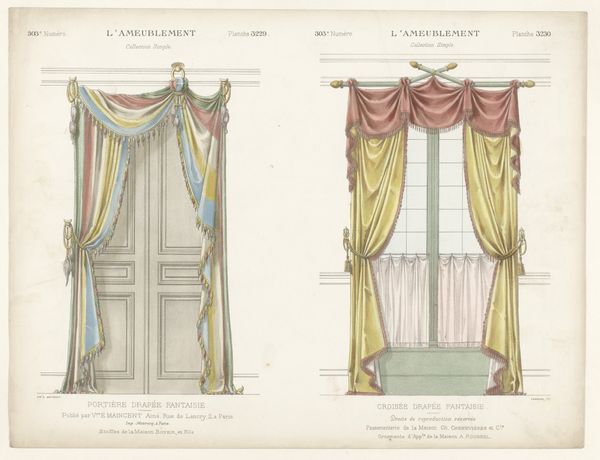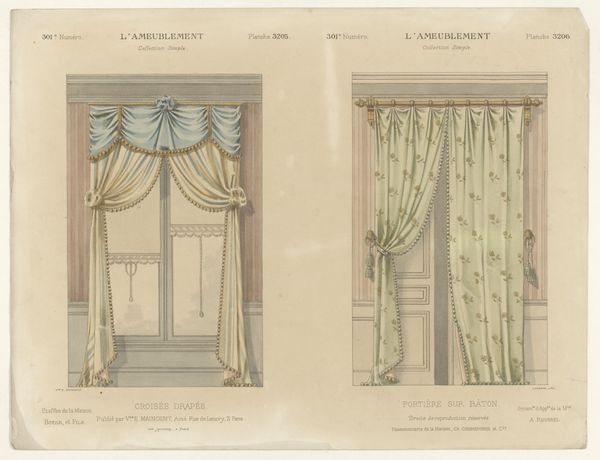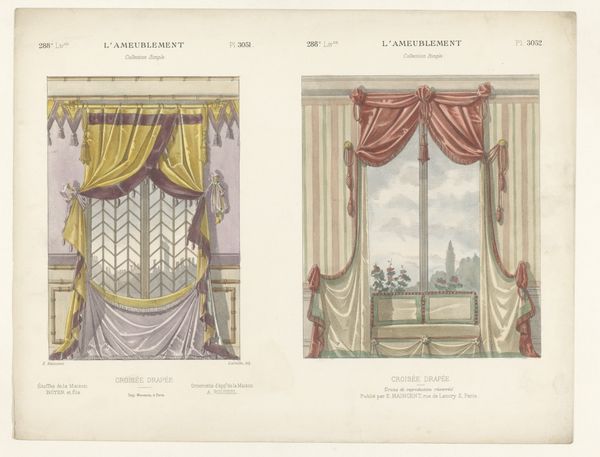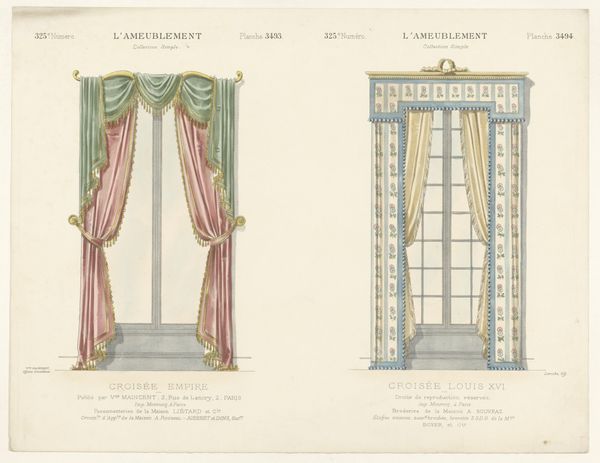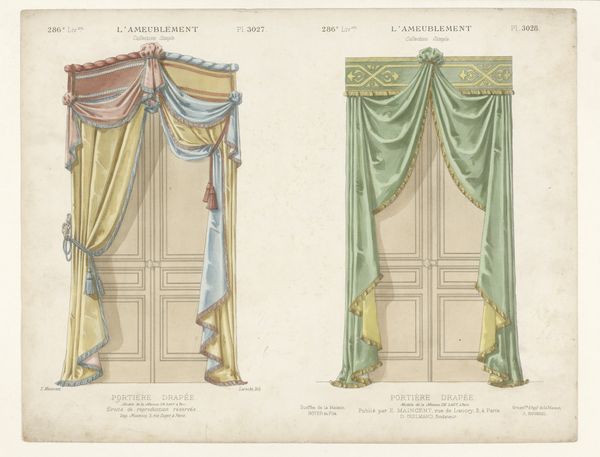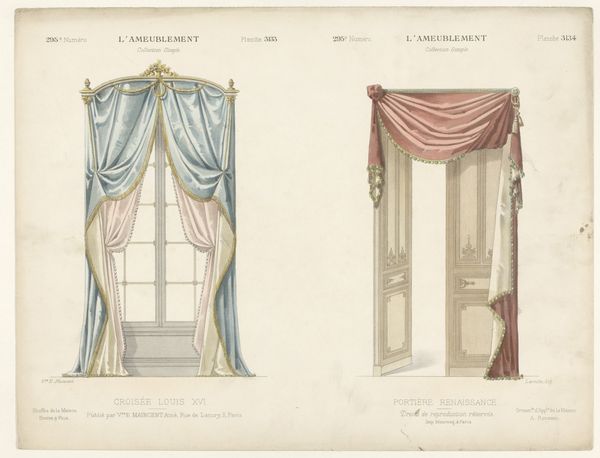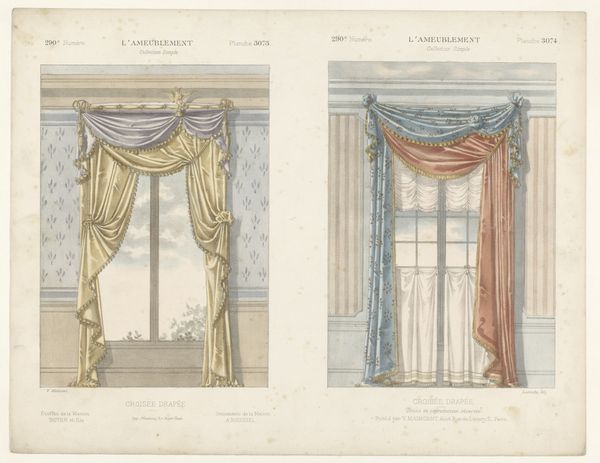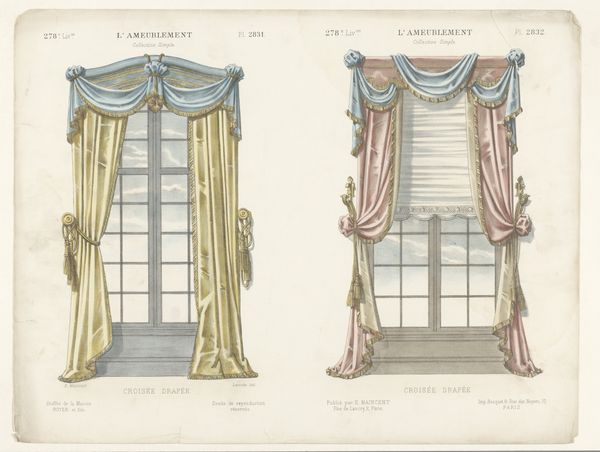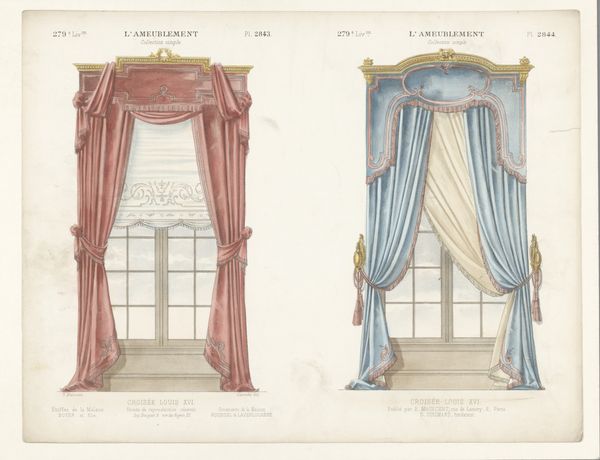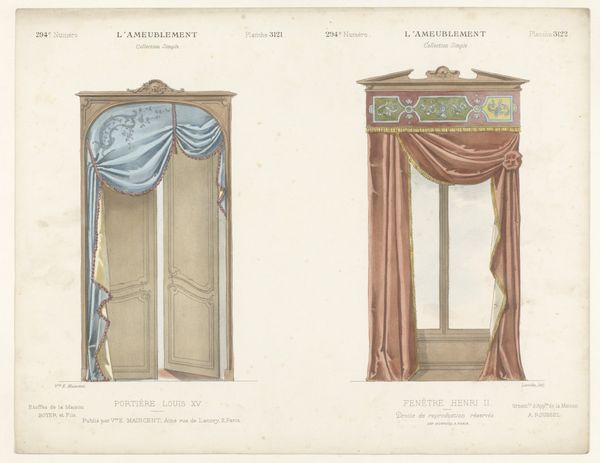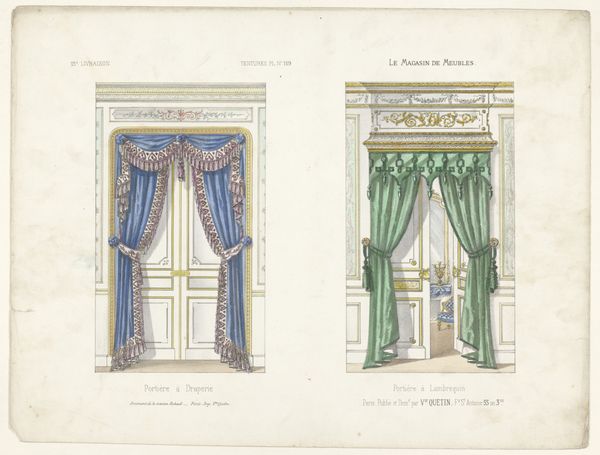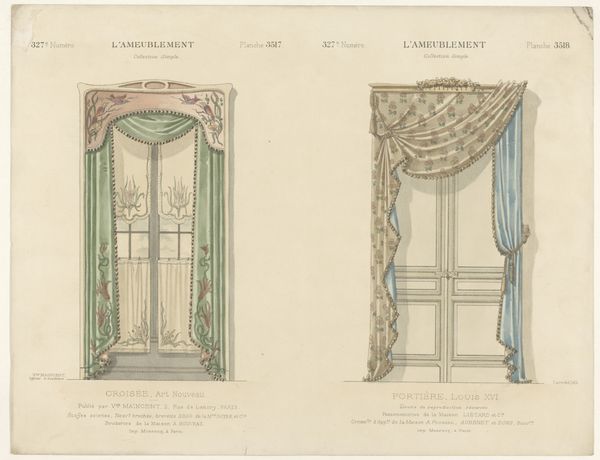
drawing, print
#
beige
#
drawing
#
aged paper
#
toned paper
#
art-nouveau
#
muted colour palette
#
parchment
# print
#
tea stained
#
form
#
nude colour palette
#
warm-toned
#
decorative-art
#
soft colour palette
#
brown colour palette
Dimensions: height 272 mm, width 358 mm
Copyright: Rijks Museum: Open Domain
Curator: L\u00e9on Laroche created "Twee vensters met gordijnen"—or "Two Windows with Curtains"—in 1895. It's rendered as a print on what appears to be aged or toned paper. What are your first impressions? Editor: A delicate domesticity. The palette is soft, almost faded, suggesting a bygone era when even the most mundane aspects of life—like window dressings—were given considerable artistic attention. Curator: Precisely. Note how Laroche focuses on the formal qualities of each design: the cascading folds of the draped curtain on the left, contrasted with the simpler, straighter lines of the curtain on the right. It is a comparative study in compositional styles. Editor: And yet, these aren't mere design studies. These windows offer framed views—or perhaps blocked views—hinting at the negotiation between private and public spheres. One might read these curtain styles as coded indicators of class and gender. The ornate drape on the left may symbolize a traditional, more opulent feminine space. Curator: Interesting perspective! I appreciate how you draw attention to possible social meanings, yet I must note that in the context of decorative art, such embellishments simply serve the purpose of visual enrichment. Look at the meticulous detail in the tassels and the valance. The material and its ornamentation are central to the artist’s intent. Editor: Granted, but the choice to present these window treatments side-by-side seems deliberate. It prompts questions about who inhabits these spaces, and what social performances they are designed to uphold or subvert. Even the slightly different light filtering through each window evokes varied lived experiences. Curator: Your interpretation adds a layer of narrative I hadn’t considered, it’s a compelling insight. Editor: Thank you. Analyzing art is fundamentally an act of contextualizing—uncovering the relationships between aesthetics, society, and lived experience. Curator: An astute observation. Perhaps the beauty of art lies not in fixed meanings, but in the multiple interpretations it allows, each illuminating a different facet of the human experience.
Comments
No comments
Be the first to comment and join the conversation on the ultimate creative platform.
